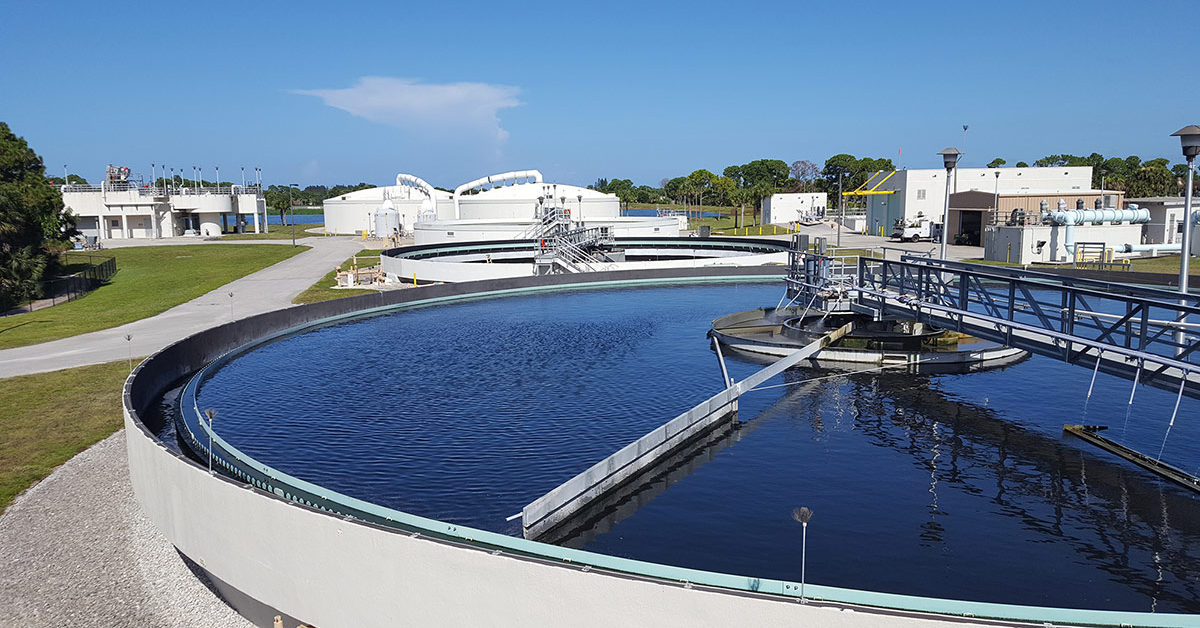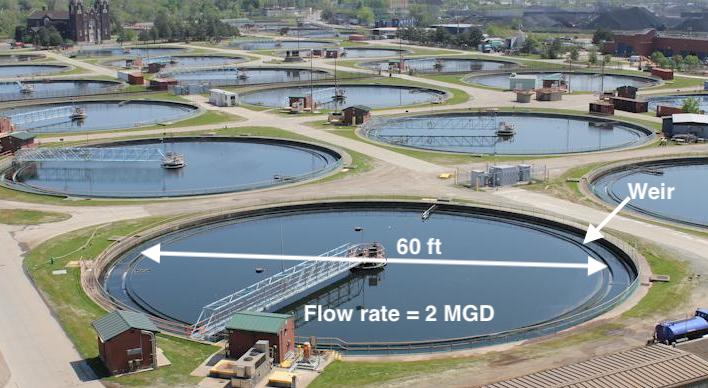To improve your math skills, let’s solve a wastewater math practice problem. In this post, we’ll learn how to calculate the weir overflow rate of a primary clarifier.
The weir overflow rate is used to determine the potential for high velocities over the weir. Wastewater moving at a high velocity would cause more solids to flow over the weirs. Therefore, you want to prevent high velocities, which would adversely affect the efficiency of the sedimentation process.
The weir overflow rate is simply the gallons per day of wastewater that flow over one foot of weir. In other words, it’s the flowrate of wastewater leaving the clarifier per linear foot of weir.
Here’s the formula for weir overflow rate:
To better understand the concept of weir overflow rate, let’s solve a practice problem.
Wastewater Math Practice Problem:
A circular clarifier has a weir with a diameter of 60 feet. If the flowrate of the wastewater is 2 MGD, what is the weir overflow rate?
Answer:
The flow rate was given to us as 2 MGD, which is 2,000,000 gallons/day.
For the bottom of this formula, we weren’t given the weir length. Therefore, we’ll need to calculate it, using the diameter of the weir given to us in the problem statement.
Now, enter the weir length and flow rate into the Weir Overflow Rate Formula:
As you can see, calculating the weir overflow rate is fairly straight-forward. The formula for the weir overflow rate will be given to you on the Formula Sheet at the test center. Therefore, you won’t have to memorize it.
If math is your biggest weakness, make sure to solve many practice questions before your exam. To improve your math skills, you’ll need to solve tons of relevant math questions. Get your hands on a lot of practice questions, and solve as many as you can.
HELPFUL RESOURCES
Practice Tests for Wastewater Treatment Operator Certification
If you’re looking for more wastewater math problems, click here.





